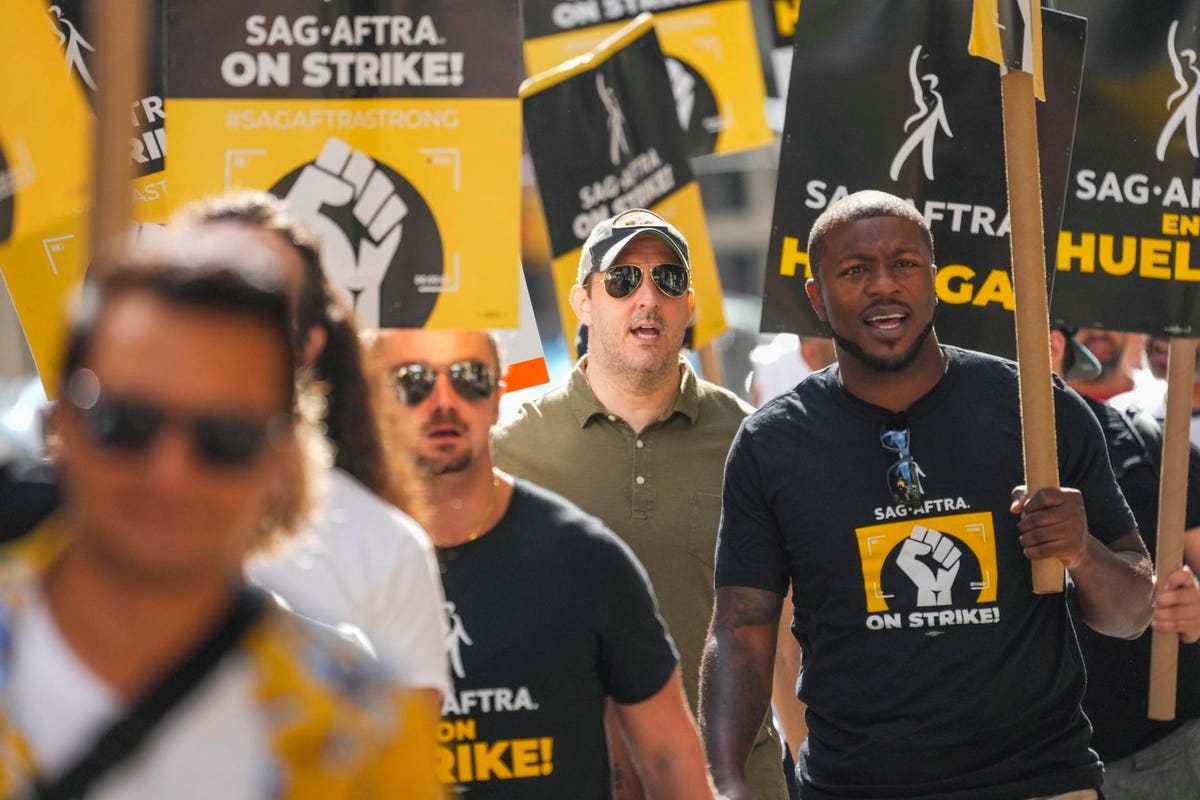The writers and actors strikes continue to draw out without an end in sight. But could the court of public opinion—a critical component in an industry that relies on consumer support—hold enough sway to force either side to compromise?
If so, that may go in the creatives’ favor over conglomerates. Based on social media activity, surveys and expert observation, it seems that the striking members of the Writers Guild of America and Screen Actors Guild and American Federation of Television and Radio Artists (SAG-AFTRA) are getting the most public sympathy.
Right now, the Alliance of Motion Picture and Television Producers (AMPTP), which includes studios, networks and streamers that distribute TV shows and movies, is in a delicate position.
“The Hollywood infrastructure does not like labor strife,” says attorney Tom Ara, global co-chair of the Media, Sport and Entertainment sector group at DLA Piper. “It is not good for business. It’s not good for earnings. It’s not good for shareholder reports. So, of course, there’s a desire for there to be an agreement and for there to be peace. And I think that will be what drives negotiations as we go into the fall. This desire for continuity.”
Survey Says Public Supports The Strike
There’s evidence of public support for the strike from recent surveys. Horizon Media released a study earlier this month that found that nearly three-quarters of respondents said they were following the strike, and support for the writers and actors far outweighed support for the studios, networks and streamers.
Horizon noted people felt the writers and actors were “more relatable” and that the survey “revealed that the raised fist emoji—which has historically been used as a symbol of solidarity for marginalized and oppressed groups—has been used more than 53K times to express support for the writers and actors who are on strike.”
Actors and writers have used social media to their great advantage, which perhaps shouldn’t be a surprise—they are, after all, the creative ones. Photos of cast reunions on the picket lines for beloved shows such as The West Wing, The Office and Parks and Recreation have gone viral and attracted thousands of “likes” across social platforms.
Plus, such pictures featuring actors whose best-known roles are small, supporting ones drive home the union’s point that it’s not just the big names who will benefit from their agreement demands—it’s mostly the lesser-known names. It’s a savvy move to sway public perception.
“I think social media is playing a significant role,” Ara says. “The unions are using social media in a material way.”
Writers and actors have also posted residual checks they’ve received from recent work (such as actress Mandy Moore showing checks for just a few cents for her work on the big NBC hit This Is Us), underscoring their arguments that they’re being underpaid in the streaming era.
Can Public Opinion Force A Deal?
Of course, winning the court of public opinion is one thing. Getting the deal you’re striking for is quite another, and so far it’s unclear if prevailing in a public relations battle will make a difference. During the previous writers strike, which was settled after four months in 2008, the value of public input wasn’t notable.
Either way, the pressure on both sides to settle is ramping up.
“There is not an unlimited stash of content anywhere, even at the major streaming outlets, though some may have more runway than others,” Ara says. “But I don’t think anyone views this as like, hey, we can go a year without producing anything new.”
Read the full article here





